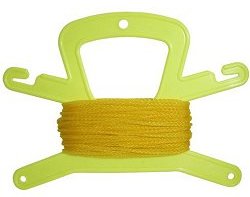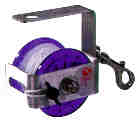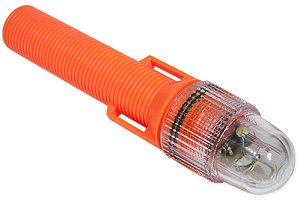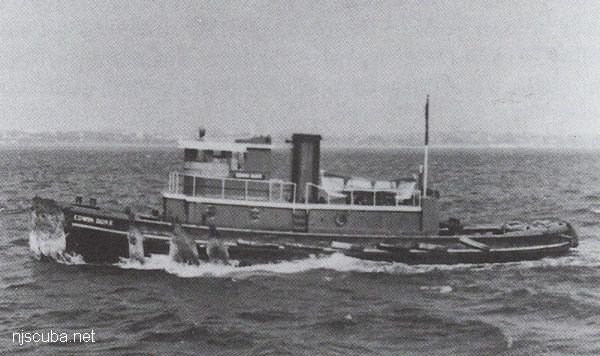Navigational Aids
Here are a few pieces of gear to help you find your way around in the deep blue, or green, brown, or black, as the case may be. When diving, it is important to remember that you need to navigate both horizontally, and vertically. The vertical component is usually taken care of by the dive boat anchor, but emergencies do occur, and you should be prepared.
2016 Update
Nothing much has changed in twenty years. The Tektite strobe is exactly the same, and you can still get good big dive reels, although enclosed models have disappeared. Compasses still point north, and flags are still a bother.
Top wreck divers offer their opinions on how to deal with low visibility. Using navigation skills and avoiding panic are the keys to coping with this problem.

Diving Blind
YOU'RE INSIDE A WRECK, and either through your own fault or an environmental change, the visibility drops to zero. How do you manage it?
We asked two of the Northeast's top tech divers for their opinions on managing low- or no- vis overhead environment situations.
Dan Crowell is captain of the Brielle, New Jersey-based dive boat SEEKER. He is a tech diving instructor, as well as a commercial diver who has made more than 130 dives on the Andrea Doria. He has also been a member of expeditions to the USS Monitor and the Britannic, among others.
John Chatterton also is a commercial diver, tech instructor, and boat captain. Among his dive accomplishments are the first Trimix dive on the Lusitania and the first rebreather dive on the Britannic. He did his 100th dive on the Doria in 1996. Both men are also accomplished underwater videographers and members of the prestigious Explorers Club.
"I always plan on encountering zero visibility, " said Chatterton. "If I don't, great. If I do, it poses two specific problems: One, it's as intimidating as hell, and two, it poses terrific navigation problems. Preparation is the key defense."
Crowell says divers are responsible for creating most visibility problems. Ninety percent of the time, it'll clear if you just stop moving, maintain contact with the wreck and wait."
As with any difficult environment or situation, panic is the killer in zero vis, he says. Relax, take a few breaths and analyze what is occurring. Maintain your original position vis-a-vis contact with your surroundings and think before reacting. If there is a current, it will eventually clear your position.
Crowell says one simple means of avoiding visibility problems when digging or moving wreckage is to orient yourself toward the exit before you begin to dig and to excavate into the current, not with it.
NAVIGATION
Both divers consider navigational skills to be the key to low visibility diving. "No method of navigation is failure proof", said Chatterton. "In my opinion, successful navigation is using multiple methods simultaneously as conditions dictate. Navigation doesn't happen by itself. It takes effort, but it can enable you to do things that otherwise would be extremely foolhardy."
Simple Navigation
Commercial diver John Chatterton uses the following tips to keep navigation simple:
STROBE LIGHTS or Cyalume sticks at critical navigation points.
IDENTIFICATION of specific locales within the ship. This comes from experience of intimate knowledge of the wreck.
MAGNETIC COMPASS: Know the lay of the wreck and the direction you're traveling.
PENETRATION LINE: (a "pen line").
LINES OF the WRECK: Follow naturally occurring lines like a seam between a deck and a wall, a pipe or a cable.
EXACT DEPTH: Know the exact depth of landmarks, exits, tie-ins and other key navigational points.
"At any given time, I will have, at the very least, two methods employed, " he says.
Crowell adds personality to Chatterton's description: "It's analogous to going shopping at a mall. Some people drive, park their cars, go shopping, go back to their cars and leave, never having to stop and think where they are. Others have to remember what row and section they parked in, which entrance they used, etc. The number of navigational methods you use depends on what you're comfortable with."
REELS
"I hardly ever dive with a reel, " said Crowell, "but I only go as far as I'm comfortable. If you don't feel comfortable, you shouldn't be where you are. Pen (penetration) lines are fine if you know how to use them and lay them out. There's also a time factor involved on each end of the dive - laying the line going in and removing the line coming out. A reel is a secondary piece of equipment. Don't use it as a crutch nor expect it to be there when you need it."
"A pen line can break or be cut on just about anything", noted Chatterton. "Then what? In my opinion, penetrating with only a reel is foolish and dangerous. And using a pen line is much slower than swimming without one.
PROGRESSIVE PENETRATION
"As I understand it, Gary Gentile coined the phrase 'progressive penetration' to describe penetration without a reel, instead relying on multiple dives to learn a specific area and progressing incrementally each dive", said Chatterton. "I'd describe this as experience, but it's come to describe any non-reel penetration."
"Knowledge and experience go a long way", agreed Crowell. "Don't go beyond your comfort zone. Get deck plans and study the layout of the wreck. Count portholes or doorways on the way in. And start practicing progressive penetration on wrecks with lots of ambient light. One thing I still do is take my light and place it in my stomach, then sit and wait for my eyes to become accustomed to the dark. You'd be surprised at how they pick up the ambient light."
"Panic will kill you", said Crowell. "It reverts right back to your open water training. Assess the situation, stop and take three breaths, but don't panic." the name of the game is survival, which is as much an attitude as an action.
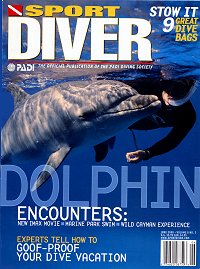
SURVIVAL
More often than not, it is the perception of a problem, rather than the problem itself, that leads to an accident. Don't freeze, and don't focus on what you did wrong - there's plenty of time for recriminations later. Instead, concentrate on getting your breathing, emotions, and actions under control. Think about where you are and how you will exit the wreck, then devote your attention to retracing your route at a calm, steady pace.
reprinted from Sport Diver magazine, May / June 2000



